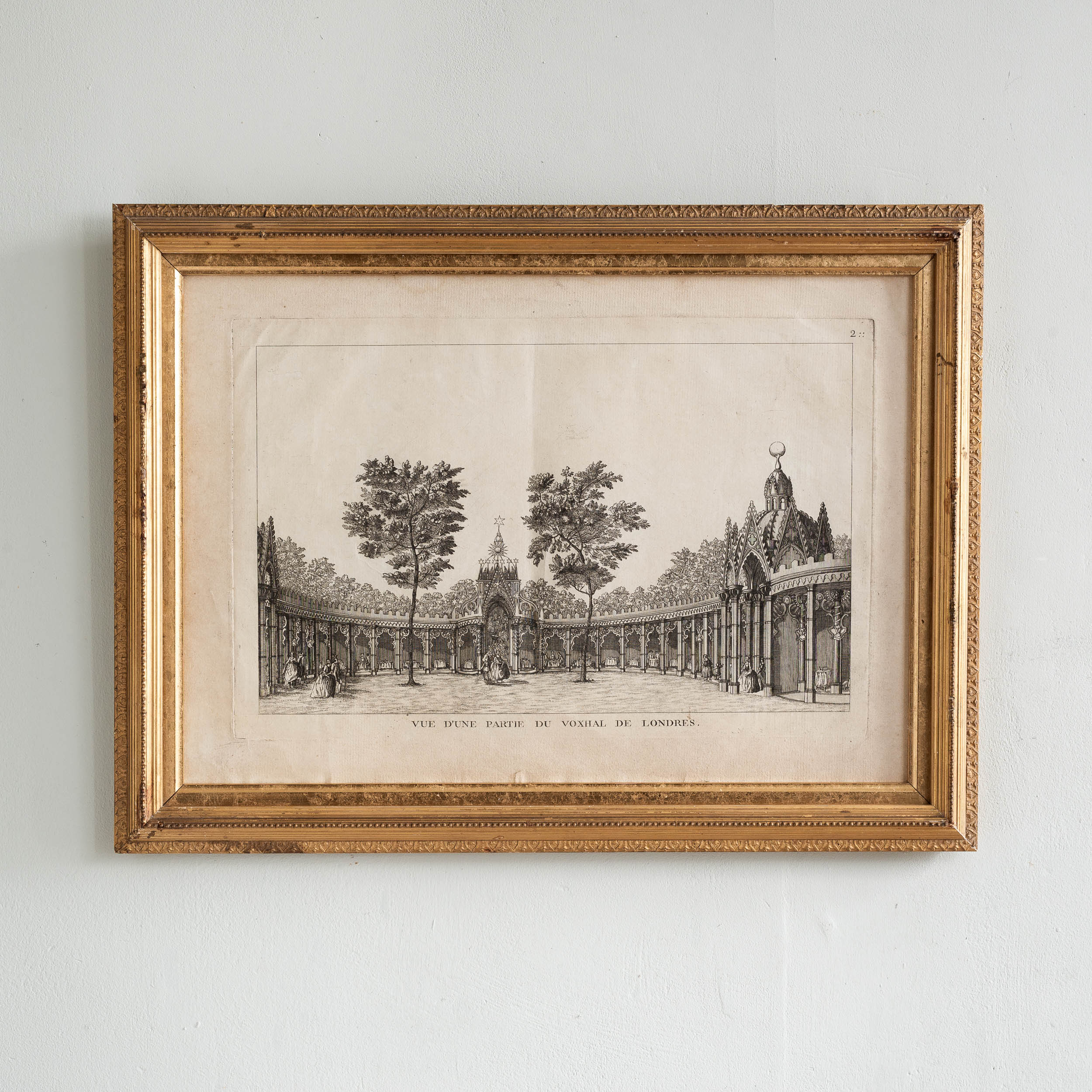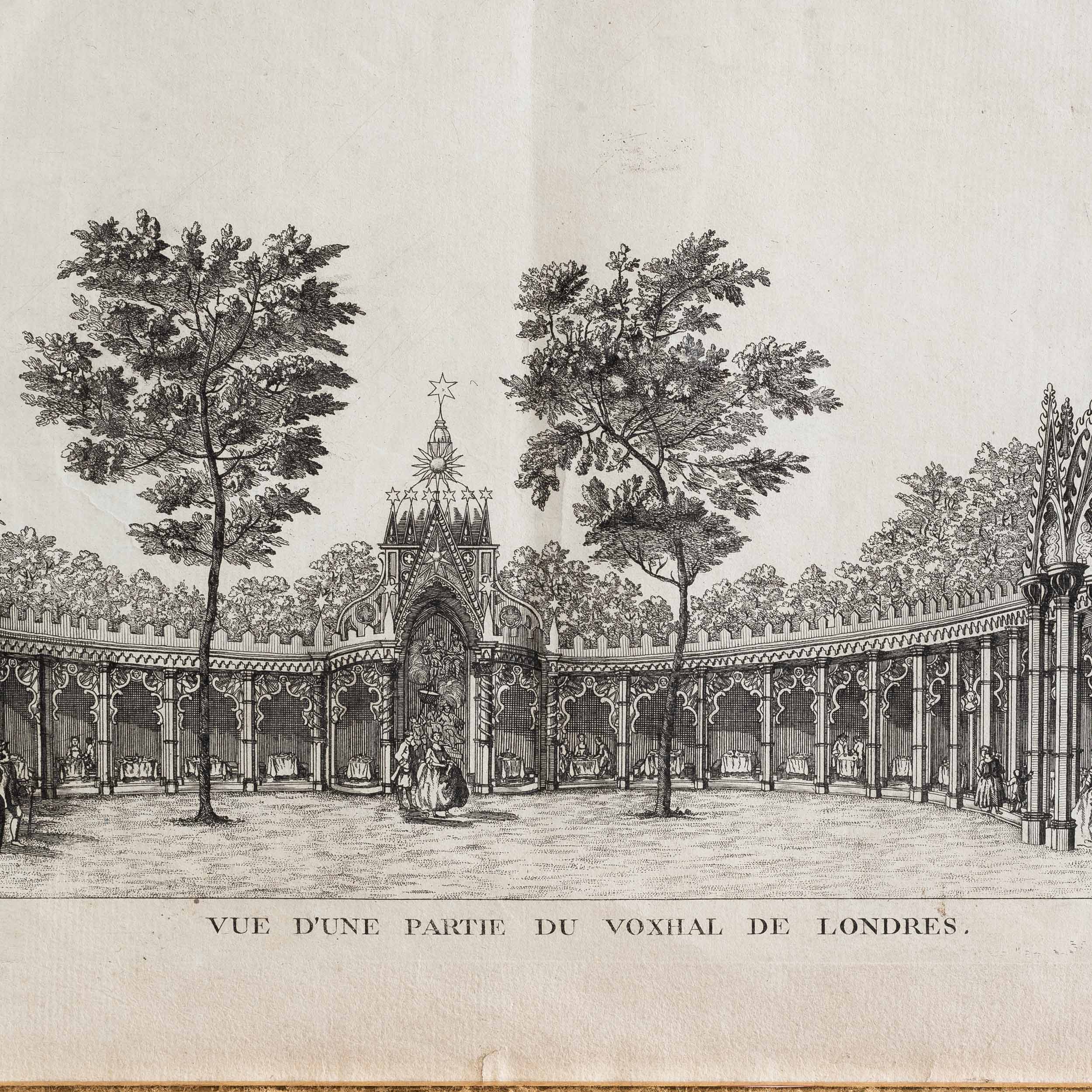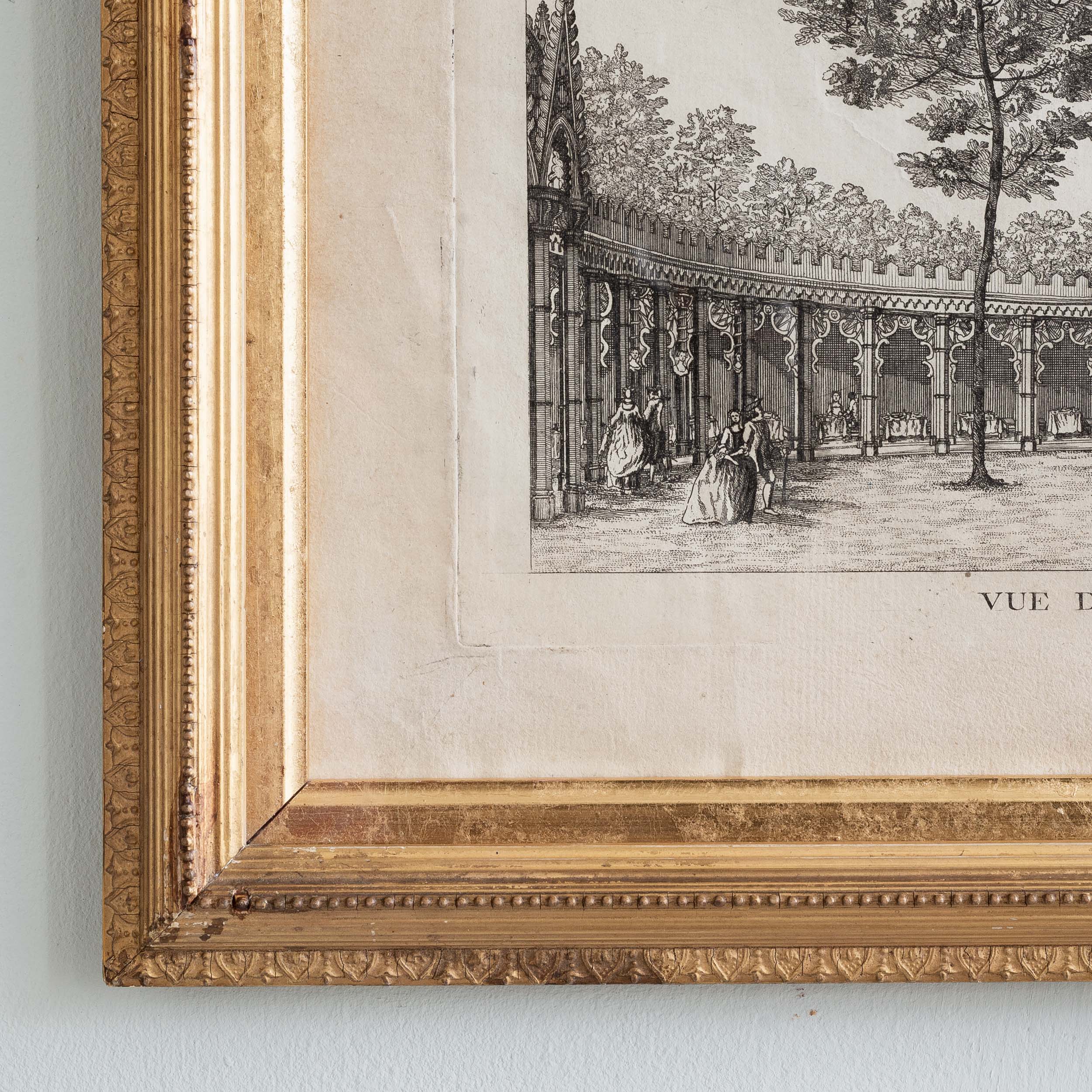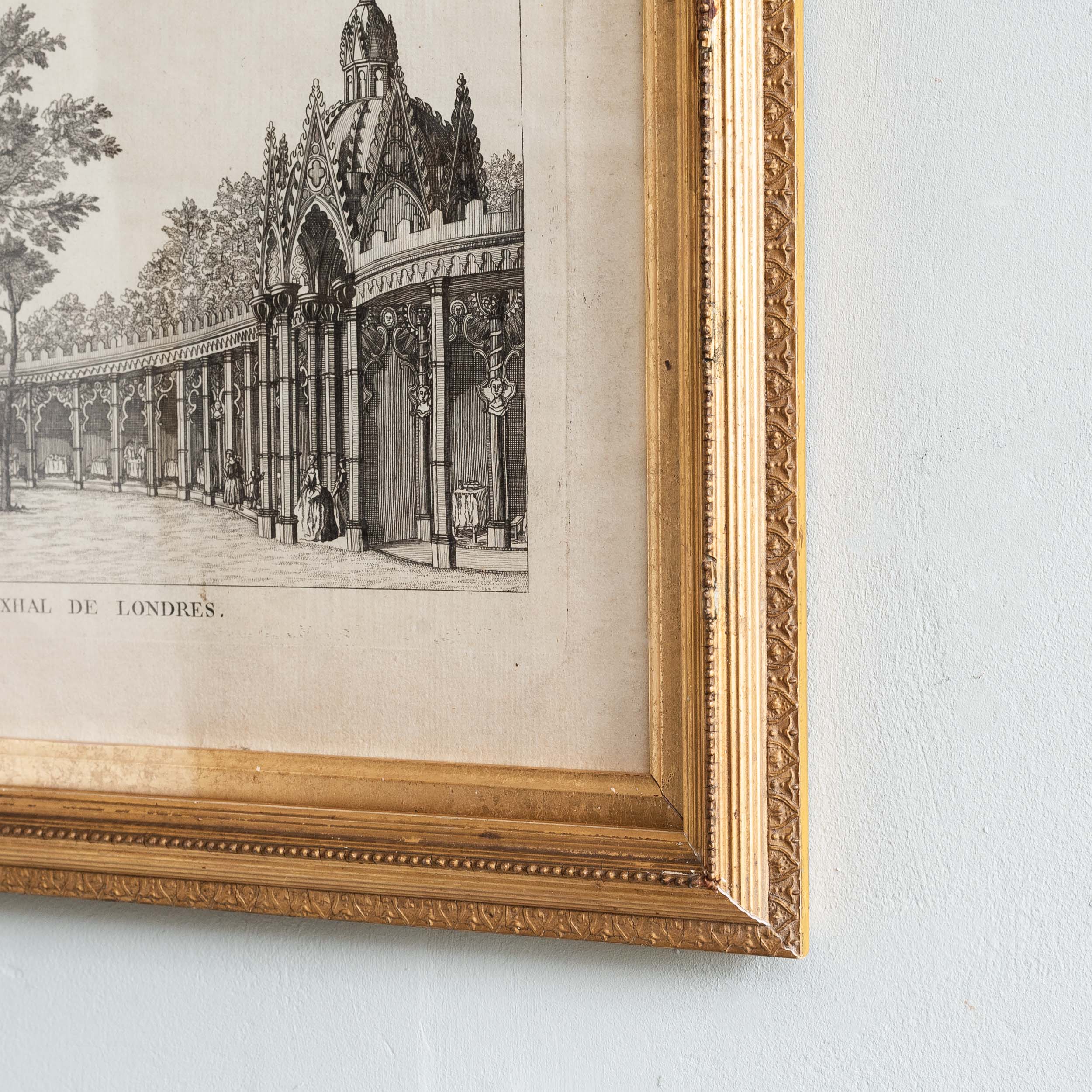Vue D’une partie du Voxhal de Londres
The Temple of Comus was named… after the god of cheer and good food. The building, which, although primarily devoted to dining, allowed for the appreciation of the arts and music as well as polite conversation in civilised surroundings. Initially, the building was “classical in style, with a colonnade of Ionic columns supporting a straight entablature, topped with urn finials; the semicircle flowed in a smooth curve out of the straight colonnade of the northern range of supper-boxes.” However, the designer also incorporated Gothic arches and “broad-ramped scrolls that acted as buttresses for the dome” and other unorthodox details. “The apparent breaking of architectural rules, mingling different styles in the same building, was deliberate and entirely typical of the unorthodox design of the English Rococo, which aimed to create playful, light-hearted works.”
£600
View of the Temple of Comus in Vauxhall Gardens, which differs from the usual one seen based on the work Canaletto. This version was printed for a work on European gardens, called ‘Jardins Anglo-Chinois à la Mode’ by Georg Louis le Rouge. Original copper-engraved print presented in a gilt frame with slip.




